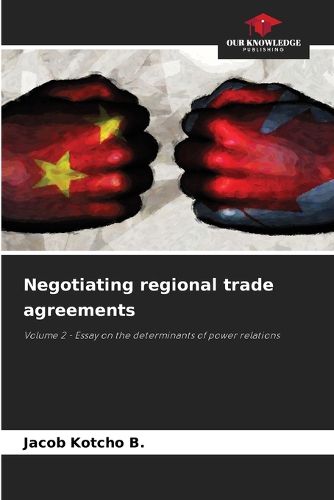Readings Newsletter
Become a Readings Member to make your shopping experience even easier.
Sign in or sign up for free!
You’re not far away from qualifying for FREE standard shipping within Australia
You’ve qualified for FREE standard shipping within Australia
The cart is loading…






This title is printed to order. This book may have been self-published. If so, we cannot guarantee the quality of the content. In the main most books will have gone through the editing process however some may not. We therefore suggest that you be aware of this before ordering this book. If in doubt check either the author or publisher’s details as we are unable to accept any returns unless they are faulty. Please contact us if you have any questions.
In the first volume of this book, the author demonstrates that power relations in the negotiation of a regional trade agreement within an asymmetrical configuration are determined and explained by a set of socio-anthropological, economic, political, geographical and historical factors. These factors can be summarized by five concepts: strength, dependence, coherence, strategy and tactics. In this second volume, he classifies these determinants at work at all levels of negotiation into two main categories: formal and informal macro-factors, and micro-factors or the underlying logics of the players. The grid thus developed is applied to the negotiation of the Economic Partnership Agreement between the EU and the countries of Central Africa.
$9.00 standard shipping within Australia
FREE standard shipping within Australia for orders over $100.00
Express & International shipping calculated at checkout
This title is printed to order. This book may have been self-published. If so, we cannot guarantee the quality of the content. In the main most books will have gone through the editing process however some may not. We therefore suggest that you be aware of this before ordering this book. If in doubt check either the author or publisher’s details as we are unable to accept any returns unless they are faulty. Please contact us if you have any questions.
In the first volume of this book, the author demonstrates that power relations in the negotiation of a regional trade agreement within an asymmetrical configuration are determined and explained by a set of socio-anthropological, economic, political, geographical and historical factors. These factors can be summarized by five concepts: strength, dependence, coherence, strategy and tactics. In this second volume, he classifies these determinants at work at all levels of negotiation into two main categories: formal and informal macro-factors, and micro-factors or the underlying logics of the players. The grid thus developed is applied to the negotiation of the Economic Partnership Agreement between the EU and the countries of Central Africa.